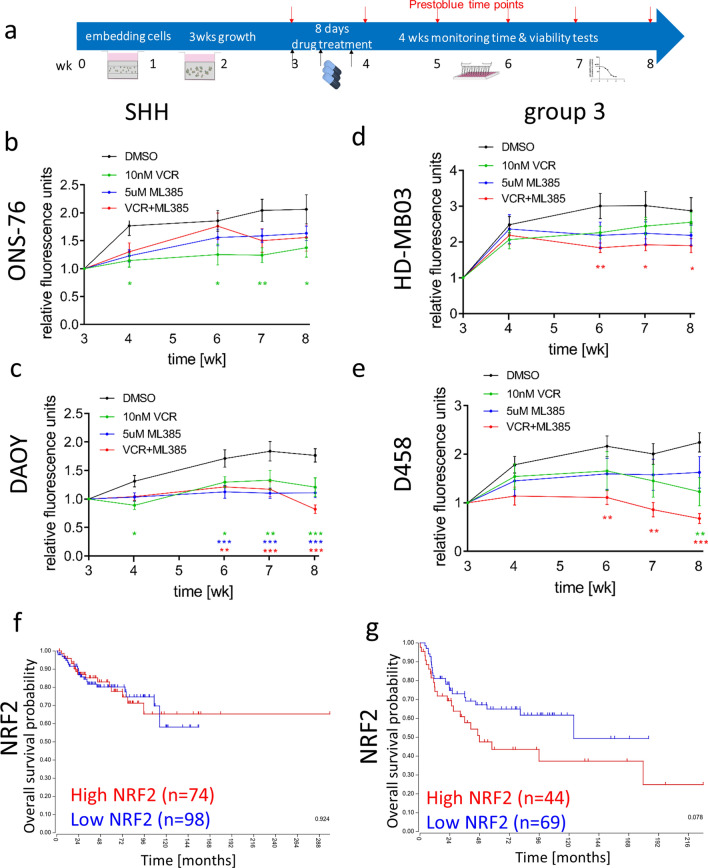Fig. 6.
A combination of chemotherapy and NRF2 inhibition significantly improves long-term treatment of Group 3 models. a A scheme illustrates the course of the long-term drug treatment assay as previously established [8]. After 3 weeks of growth inside the HA hydrogels the SHH cell lines ONS-76 b, DAOY c and the Group 3 cell lines HD-MB-03 d, D458 e were treated four times with either 10 nM vincristine (green), 5 µM ML385 (NRF2 inhibitor; blue) or a combination (red) or vehicle (black) during one week and cell viability was monitored for the following four weeks in the absence of drug/vehicle present anymore. In the p53 wt SHH cell line ONS-76 only the chemotherapeutic reagent vincristine significantly decreases cell viability, while the NRF2 inhibitor (ML385) alone and in combination with vincristine are also effective in the p53mut SHH cell line DAOY. In contrast, in both Group 3 models the combination of vincristine and NRF2 inhibitor significantly reduced cell viability. (mean ± SEM, n = 3; Two-way ANOVA and Dunnett’s post hoc test, *P < 0.05, **P < 0.01 and ***P < 0.001 all relative to DMSO according to colour code). Analysis of the biggest publicly available MB data base [21] shows that NRF2 (gene name: NFE2L2) gene expression does not predict survival of SHH (f; logrank test, p = 0.924) patients, but is associated with worse survival in Group 3 patients (g; logrank test, p = 0.078). Note the exclusive effect of NRF2 expression in Group 3 patients

